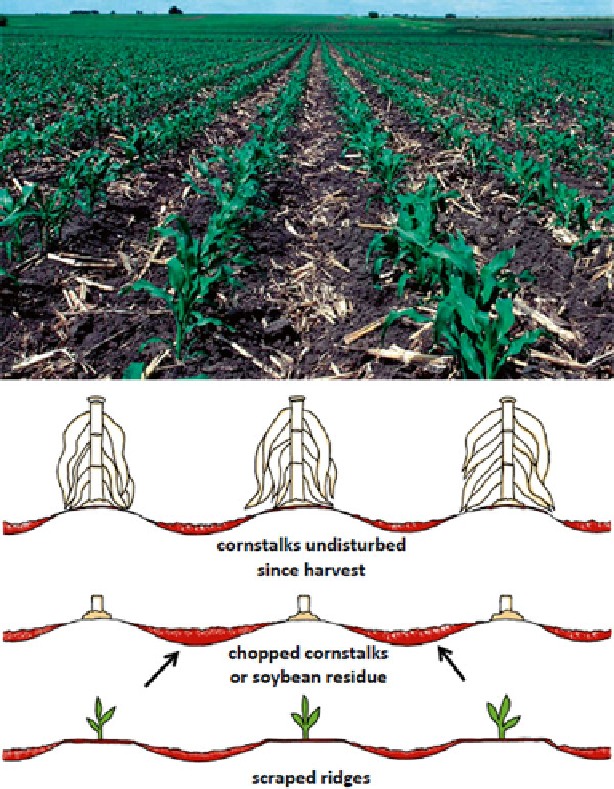Agriculture Reference
In-Depth Information
Fig. 12.5
Ridge tillage (Source: Adapted from Introduction to Ridge-Tillage for Corn and Soybeans. Purdue University
Cooperation Extension Service ID-180)
12.2.4.1 Advantages
Conservation tillage benefi ts farming by mini-
mizing erosion, increasing soil fertility, and
improving yield. Plowing loosens and aerates the
soil which can facilitate some deeper penetration
of roots. Tillage is believed to help in the growth
of microorganisms present in the soil and helps in
the mix of the residue from the harvest, organic
matter, and nutrients evenly in the soil.
Conservation tillage systems also benefi t farmers
by reducing fuel consumption and soil compac-
tion. By reducing the number of times the farmer
travels over the fi eld, farmers make signifi cant
savings in fuel and labor. Labor inputs for land
preparation and weeding are also reduced once
the system becomes established. In turn, this can
increase time available for additional farm work
or off-farm activities for livelihood diversifi ca-
tion. Also once the system is established,
requirement for herbicides and fertilizers can be
reduced. The total economic benefi ts arising
from adoption of the no-tillage technique in small
farms of generally less than 20 ha in Paraguay
have reached around $941 million.
12.2.4.2 Disadvantages
Conservation tillage may require the application
of herbicides in the case of heavy weed infestation,

Search WWH ::

Custom Search